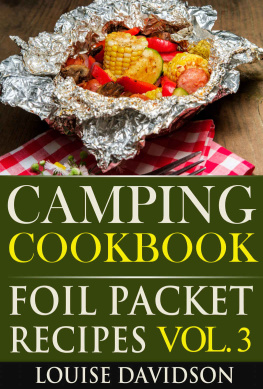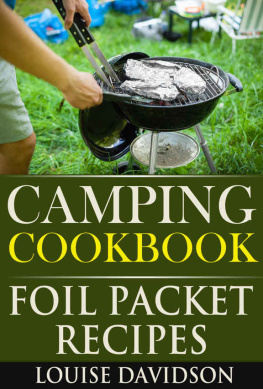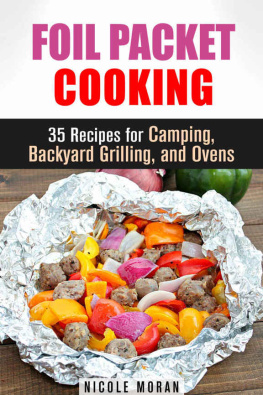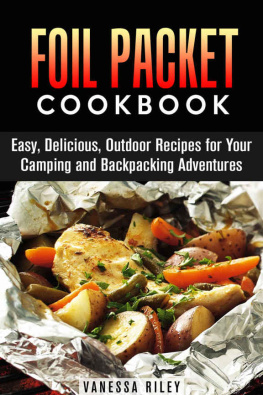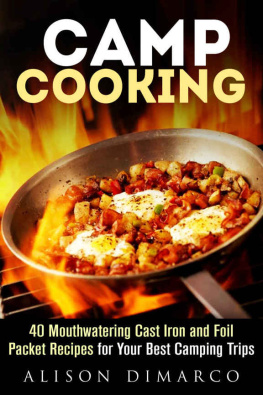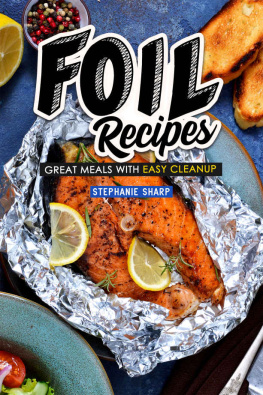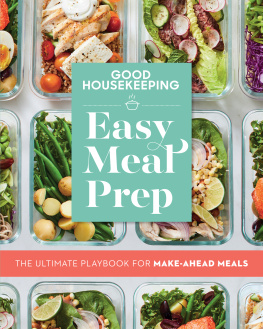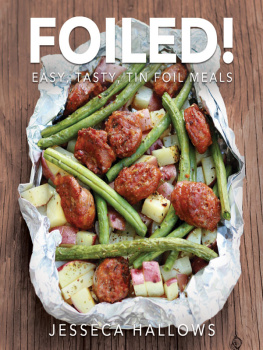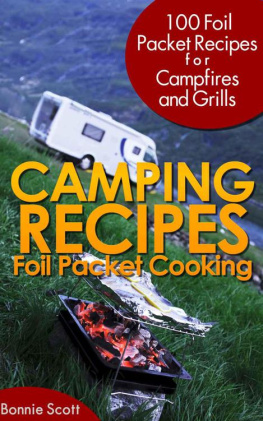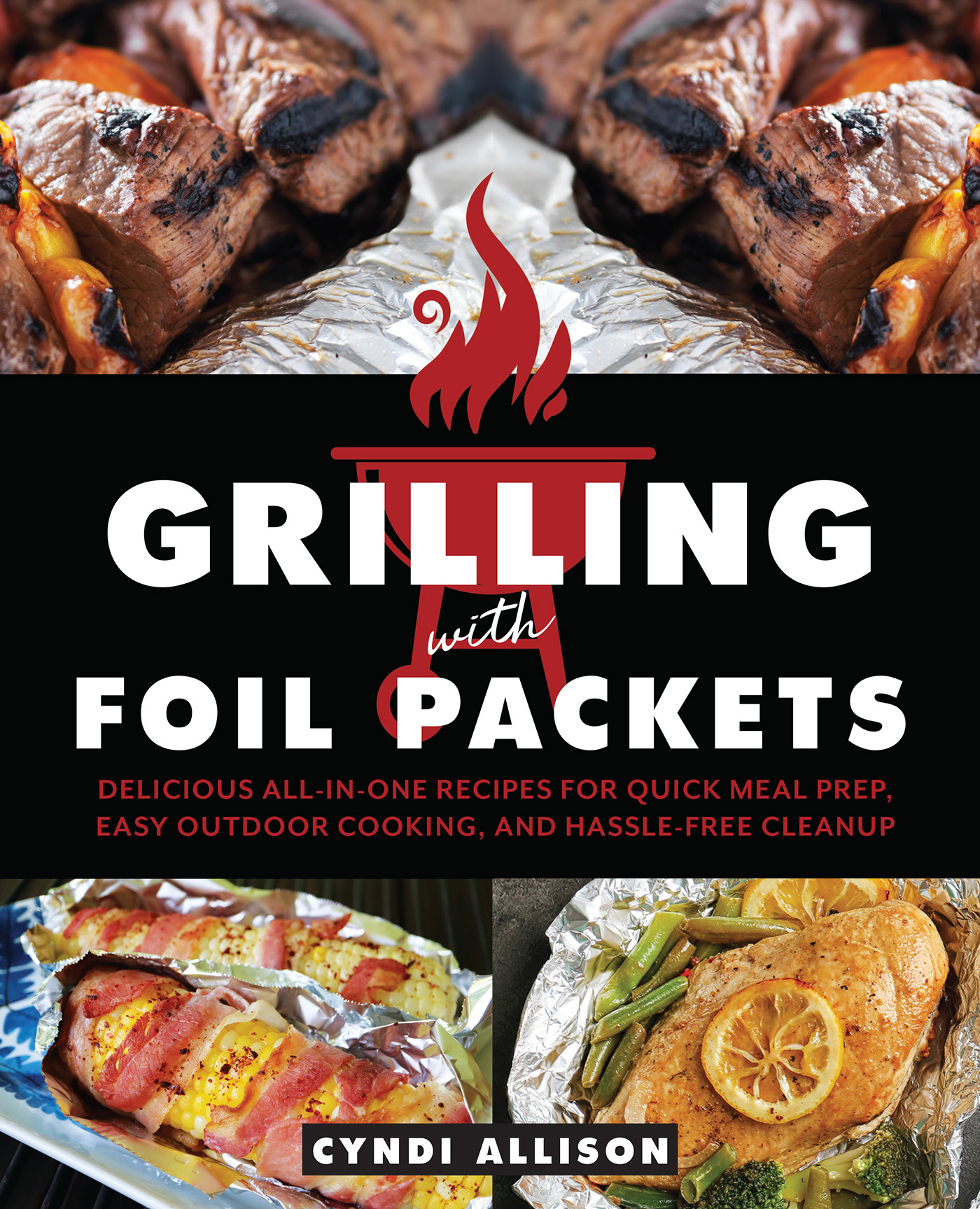Contents
Guide
INTRODUCTION
I can still remember the magic of my first hobo pack. I was attending a Girl Scout day camp at a local park, and one of our activities was to cook our own lunch. My experiences in the kitchen had been less than stellar, and at home I had been relegated to dishwasher duty after catching Pop-Tarts on fire. So, it was a complete head rush when I ripped into the foil pack Id created with hamburger, potatoes, and onion and caught the enchanting scent of a five-star meal. Okay, my foil packet was not a masterpiece, but it was mine, and it was delicious.
My days of foil-packet cooking faded into the background as I went off to college, married, and gave birth to two sons. As a military family, we were constantly packing and unpacking our belongings, and much of our cooking was on the fly as we enjoyed overseas duty stations. Once back stateside, I discovered that cooking on the stove was uncool, as one of my boys was fond of labeling drudgery, but grilling was a party. I quickly remastered myself as a frequent-flyer grill master, and my sons jumped on the barbecue bandwagon.
It was a natural leap to volunteer to help my sons Boy Scout troop with outdoor cooking. We quickly moved beyond foil-wrapped hamburger and potatoes to all sorts of meats and vegetables cooked over the flames. And, of course, we had to have desserts. Is it even possible to become an Eagle Scout (both boys earned the rank) without eating a ton of smores?
Family and friends constantly asked me for recipes and directions for grilling and pit cooking, so I started my Barbecue Master blog, which garnered a lot of hits and opportunities to talk outdoor chef-ery. At one point I had thirty grills on my porches and tucked into garage and basement spaces. We grilled so much that one of my sons called from college to ask me if hamburgers could be cooked indoors, in a pan, on a stove. His friend had suggested frying hamburgers for dinner, and he was certain that burgers could only be made outdoorson the grill or in hobo packs. You never know what youre going to learn in college. But Ill wager that outdoor hamburgers still taste better!
Though I love all outdoor cooking techniques, Ill always have a soft spot for foil-packet cooking. And while I still love ground beef with veggies, Ive found that almost anything edible can be cooked in aluminum foil. Playing with foil and fire has been an adventure, and I hope that my ideas put a sparkle in every readers eye just as that first little foil pack did for me as a young girl. Its great to find magic in something so simple and tasty, and its even more fun to build on the basics to create little works of culinary art.
HISTORY OF FOIL-PACKET COOKING
I can visualize a caveman or woman stuffing food in grape leaves or packing clay around a prized morsel before placing it in the fire. Of course, we have no real way of knowing when cooking became part of culture, but scientists estimate that humans started experimenting with cookery 1.9 million years ago. Foil-packet cooking, of course, doesnt date back to Neanderthal times. Early meal packets made of parchment paper were popularized in France, and the concept crossed the ocean to the United States in the mid-1800s. French immigrants to New Orleans made quite a splash with fish cooked en papillote (in parchment).
Tin foil was developed for industrial use in the nineteenth century. The shiny paper was used mainly for packaging things like cigarettes and chocolate, since the metal wrap kept out light and moisture.
Tin foil was rather stiff, and it tended to leach a metallic taste into foods, so entrepreneurs worked to find better solutions. Aluminum foil was developed in Switzerland in 1910 and soon became the favored wrap for chocolate bars. In 1913, aluminum foil became the packaging for Life Savers candy, chewing gum, and candy bars in the U.S. Companies could press-roll three times as much aluminum as tin per pound of metal, so the shift to aluminum was cost effective.
Foil packaging got a boost in the U.S. when Richard Reynolds founded the U.S. Foil Company in 1919 to supply facilities in Kentucky with commercial foil. After several expansions, the company took aluminum foil to the general public in 1947 for home kitchen use under the name Reynolds Wrap. The product became increasingly popular, since it was nontoxic and impermeable, and it could deadfoldlock in place around food or containers without tape or other fasteners.
By the 1970s, aluminum foil was a staple in almost every U.S. kitchen, so its no surprise that Scouts and campers began using it for outdoor cooking. It provided a simple way to put together a meal with little cleanup required afterward.
Over the years, foil packets have delighted each new generation as veterans showed young people how to cook in foil.
The explosion of the internet has made it somewhat easier to pass along information, and foil-wrapped meal packs have become more diverse. Most middle-aged adults fondly recall their hamburger camp packs, while kids today may have salmon or cauliflower packs to satisfy alternate food tastes and needs.
Scouts and campers continue to pass along the tradition of foil-packet cooking outdoors, but now families make oven foil packs at home, too. People who live alone can enjoy the simplicity of making a single meal in foil, and older adults may appreciate premade, heat-and-eat foil packs that involve virtually no cleanup. Aluminum foil packets are super simple to make and can include unlimited combinations of meat and vegetables, with flavors nicely layered by the contained cooking. Even if you only have leftovers in your refrigerator, you have the makings of a delicious packet meal. Your imagination is the only limit.
TOOLS FOR FOIL-PACKET GRILLING
As with any craft, cooking with aluminum foil is much easier, and success rates are higher when you use the right tools. A plus for both those who love to grill in foil packets and those just testing the waters is that the investment price is quite low. Most accessories are readily available at big-box stores or online. Many can be found at resale or consignment shops, too.
Turner: A jumbo turner is super helpful for making aluminum foil packs. While you can use a standard kitchen turner, it wont span the width of the pack and youll likely end up with tears in the foil.
Tongs: Tongs are handy if you are cooking over flames. Tongs give you more reach and keep your hand and body back from the direct heat as you put food on to cook, remove, flip, turn, or readjust meal packs.
Avoid tongs with jagged edges, which could tear the foil when you grab the pack. If the foil tears, the steam is released and you wont have even cooking.
Mandoline: When putting together foil packs, its important to have thin slices of uniform thickness. You can produce even slices with a mandoline, and its much faster than using a knife. Mandolines are especially nice for slicing classic foil-packet ingredients such as potatoes and onions. Do note that they may not work as well for really hard root vegetables such as winter squash, or for soft foods such as most tomatoes.
Grill Gloves: Gloves made for grilling or smoking work really well for foil-packet grilling. They protect your hands from the heat and allow you to turn or remove packs from the grate or coals without using metal utensils that could puncture the foil.


